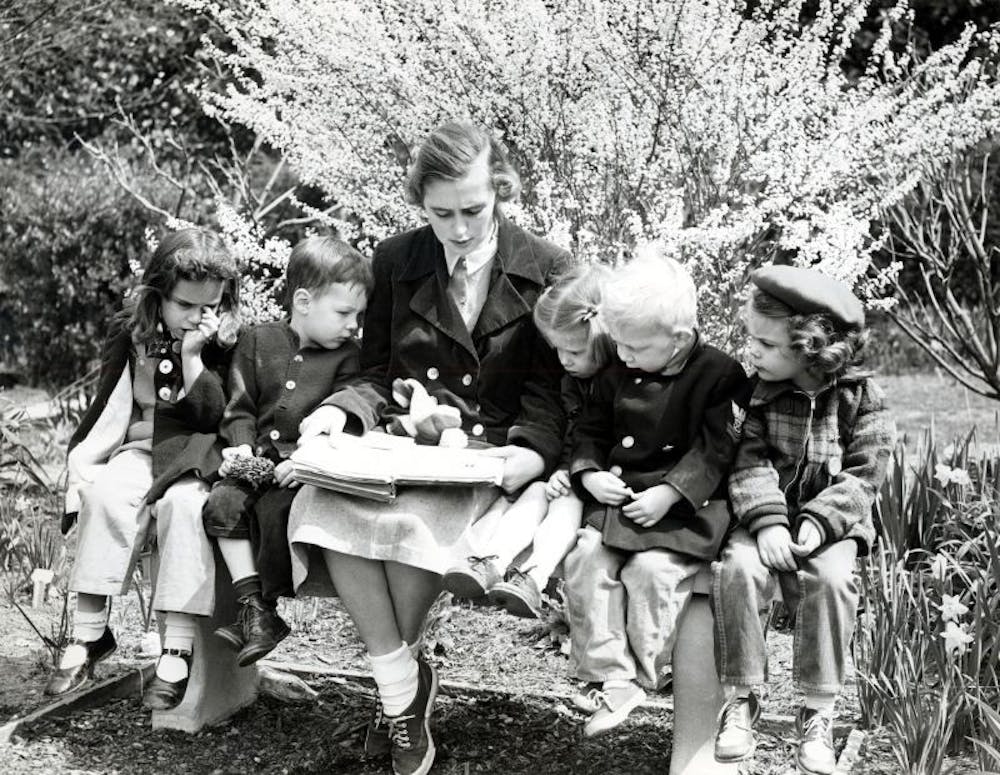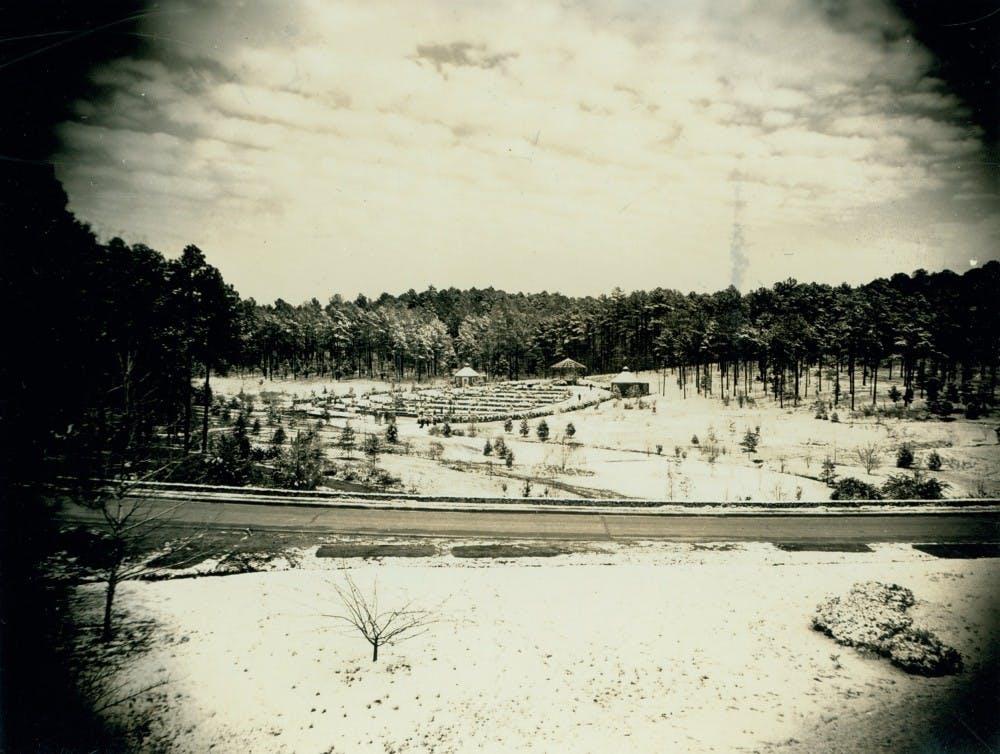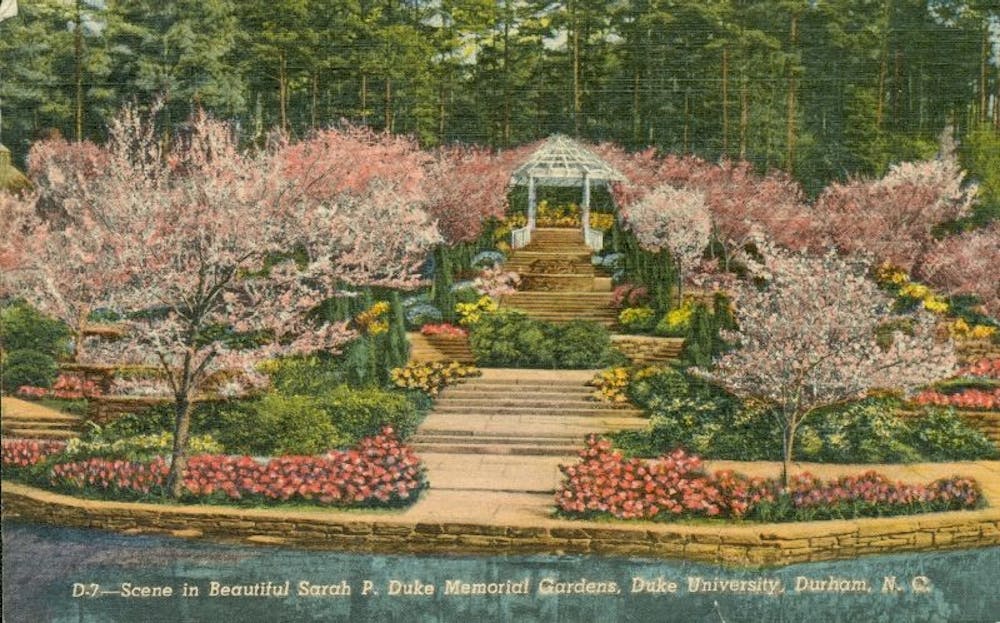You may have seen Duke's lemurs, but you might have missed out on the chickens.
Living in the Charlotte Brody Discovery Garden, the chickens are one of the many sights at the Sarah P. Duke Gardens. But the Gardens, much less the chickens, weren’t actually supposed to exist at Duke. And though it links the Duke and Durham communities with its greenery and open space, not many know about its humble beginnings.
“It was never supposed to be a garden,” said Bill LeFevre, the Gardens’ executive director. “It grew organically throughout the years without a lot of thought given into it.”
Duke usually makes detailed plans of its construction projects, and plans for the Gardens initially called for a lake, complete with fountains and springs, to add to the aesthetics of the University. But according to LeFevre, budget limitations made this infeasible.
“The campus was built at the beginning of the Great Depression, and one of the first things that got cut out of the budget was the ornamental lake,” LeFevre said.
The leftovers of Duke’s other construction projects remained on Duke's campus—an unsightly mix of debris and rubble. The remains were especially noticeable to Frederic M. Hanes—a neurologist and one of the Duke Medical School's early faculty—on his way to work in the 1930s. Hanes envisioned an iris garden to take the lake’s place, persuading Sarah P. Duke to donate $20,000 for the project that would bear her name.

The original garden proved to be problematic—flooding was common, and all the flowers drowned.
So Hanes convinced her daughter, Mary Duke Biddle, to fund a new Gardens on higher ground, which she endowed for her mother in 1938. Ellen Shipman devised a second plan, more similar to the Gardens of today.
Later on, a notable “master plan” for the Gardens was designed in 1959 by landscape architect William Leong, which was “the best thing that secured the Gardens’ future,” according to LeFevre. He also designed the South Lawn and Azalea Court, among other things, in the 1960s.
This plan prohibited building on the land used by the Gardens, which allowed for continuous improvements to the Gardens.
“It gave us the opportunity over the next 30 or 40 years to create gardens down here, instead of buildings and parking lots,” LeFevre said.
Since that decision, the Gardens has attracted more than 300,000 visitors a year, according to its website, bringing people from Durham and elsewhere to play, spend time with their families or take in the beautiful surroundings.
“No other garden has as great of an appreciation for the sights,” LeFevre said, encouraging the public to visit—he recommended the Rollins Overlook in the spring and late summer, when the sunset illuminates the Duke Chapel and the Gardens.

Get The Chronicle straight to your inbox
Signup for our weekly newsletter. Cancel at any time.

